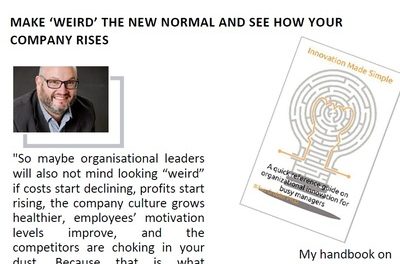
Understanding Pensions in Namibia in 2023 – Part 3

By Carmen Forster, Head of Production Development & Client Retention (Corporate Segment)
Old Mutual Namibia.
This is the third article in the series on ‘Understanding the Context of Pensions in Namibia in 2023’. We have been looking at the Namibian pension provision per the Pillars defined in the World Bank Pension Provision Model. The first article covered Pillar 0 and we commenced with our review of Pillar 2, namely pension provision via employer sponsored retirement funds.
Pillar 2: A brief recap
In the previous article we looked at the context within which retirement funds operate as well as the key role that preservation, contributions, fees, and investment returns play in assisting retirement fund members to secure a reasonable level of retirement income when they retire.
In this article we will consider the social benefits of retirement funds, some factors to consider when a member retire, and areas of Pillar 2 reform that our policy makers are likely to be contemplating.
Social Impact
Employer sponsored retirement funds have made a positive contribution towards the Namibian society for more than 50 years. In addition to providing a tax-incentivised opportunity for employees to save for their retirement, occupational retirement funds have played an important role for families whose breadwinner has passed away or is unable to work due to injury or incapacitation due to an accident or illness.
When a retirement fund member dies, the death benefit that is payable to his/her dependents is equal to the member’s accrued savings in the fund. Usually, an additional death benefit that is defined as a multiple of the member’s annual salary is added to the retirement savings benefits.
The Pension Funds Act, Act No 24 of 1956 (PFA) indicates that retirement fund trustees are responsible for distributing death benefits to dependents of deceased members. This means that the trustees must ensure that they have identified all people who were legally and or financially dependent on the deceased members. This requirement ensures that due consideration is given to the needs of all the dependents, including those that are most vulnerable.
Retirement funds have also historically allowed for members who are disabled and receiving a monthly permanent health insurance (PHI) income to continue to be a member of the fund. This means that they can continue to contribute towards their retirement saving benefits and their dependents can benefit from the death benefits payable by the fund if the disabled member passes away before reaching his her normal retirement age.
Retirement considerations
The Income Tax Act, Act No 24 of 1981 (the ITA) indicates how retirement benefits are to be taxed when a member retire.
Provident funds
If the member is retiring from a provident fund, he/she may choose to receive up to one-third of his/her retirement benefit as a tax-free cash lump sum. The remaining two-thirds of the benefit may also be taken as a cash lump sum but will be taxed at the member’s marginal tax rate. Being able to take their entire retirement benefit as a lump sum has historically been a practical solution for employees who plan to retire in remote areas where banking facilities were limited or non-existent and who intend to supplement their retirement income by subsistence farming.
There is, however, a risk that the retiree might splurge their retirement savings on items that provide for short-term rather than long-term benefits and they become reliant on the Pillar 0 universal old age pension, the Basic Social Grant, with five to ten years of retirement.
The South African government, which also allows for provident fund retirement benefits to be paid as a lump sum benefit, has decided to reduce the likelihood of this occurring by commencing with the process of phasing out provident funds as of 1 March 2021. The protection of vested right pertaining to contributions paid prior to the 1st of March 2021 has, however, been allowed for.
FIMA may also signal the end of provident funds in Namibia as it provides for full annuitisation of retirement benefits and non provision appears to have been made for vested rights.
Pension funds
If the member is retiring from a pension fund, he or she may take up to one-third of his or her retirement benefit as a tax-free lump sum but must use the remaining two-thirds to purchase an annuity if the retirement benefits is more than N$50 000. The monthly income, sourced from the annuity is taxed at the annuitant’s marginal tax rate.
Traditionally, a retiree would use his or her retirement benefit to purchase a monthly income, that is payable for the remainder of his or her life, from an insurer. There are several variations of these guaranteed life annuities, including the following, the provision for a pension to be paid to the annuitant’s spouse once the annuitant has passed away, the manner in which the income derived from the annuity increases on an annual basis, and the implementation of a guarantee period during which the annuity benefit will continue to be paid, even if the annuitant passes away during this period.
The insurer carries the longevity and investment risk related to the life annuity. This means that the insurer must continue to pay the annuitant a monthly pension until he or she passes away, even if the annuitant lives to a very old age. The benefit paid cannot be reduced and any fixed annual pension increases that were allowed for the annuity contract must be paid even if stock markets perform poorly. When the annuitant passes away, any remaining capital remains with the insurer.
Since the late 1990s, retirees have been opting for an alternative annuity product, namely the living annuity. This type of annuity provides the annuitant with more flexibility regarding the amount of income that will be paid to him or her in a particular year. The ITA indicates that the income that is drawn in a particular year must be a percentage equal to between 5% and 20% of the capital value of the living annuity. When the annuitant passes away. The remaining capital value of the annuity is payable to his or her dependents.
Living annuities are popular due to their income flexibility and legacy benefits. It is however, important to understand that the annuitant bears longevity and investment risk with respect to this product. This means that if the annuitant draws a high proportion of the living annuity capital in the early years of retirement, returns earned are poor and or the annuitant lives for a long time after retirement, the living annuitant may have to rely on the Basic Social Grant or other sources of income to supplement the dwindling income sourced from the living annuity.
One area of reform that could improve the long-term outlook for living annuities would be for the ITA to be amended such that the living annuity capital withdrawal limits are reduced. For example, South Africa has reduced their living annuity withdrawal limits so that they range between 2.5% and 17.5% rather than between 5% and 20%.
Pillar 2 Retirement Reform
Since Pillar 2 plays a significant role in Namibian retirement funding, it will be a focal point in any retirement reforms that the government plans to introduce. The current system has many merits, including the tax incentives and the well managed retirement fund structure, but the lack of compulsory preservation does reduce the likelihood that a member will be able to accrue enough retirement savings to provide for a reasonable level of income after retirement.
Any change the government introduces that is perceived to reduce freedom of choice is likely to be met with opposition. Namibians are, however, more likely to be supportive of these changes if they are not deemed to be overly harsh and the vested rights of benefits accrued prior to the implementation of FIMA are acknowledged. Changes are also likely to be supported if the long-term implications of contributing very low amounts towards retirement savings and or withdrawing retirement benefits prior to retirement are understood. This educational process is an area in which the retirement fund industry should play an active role.













































